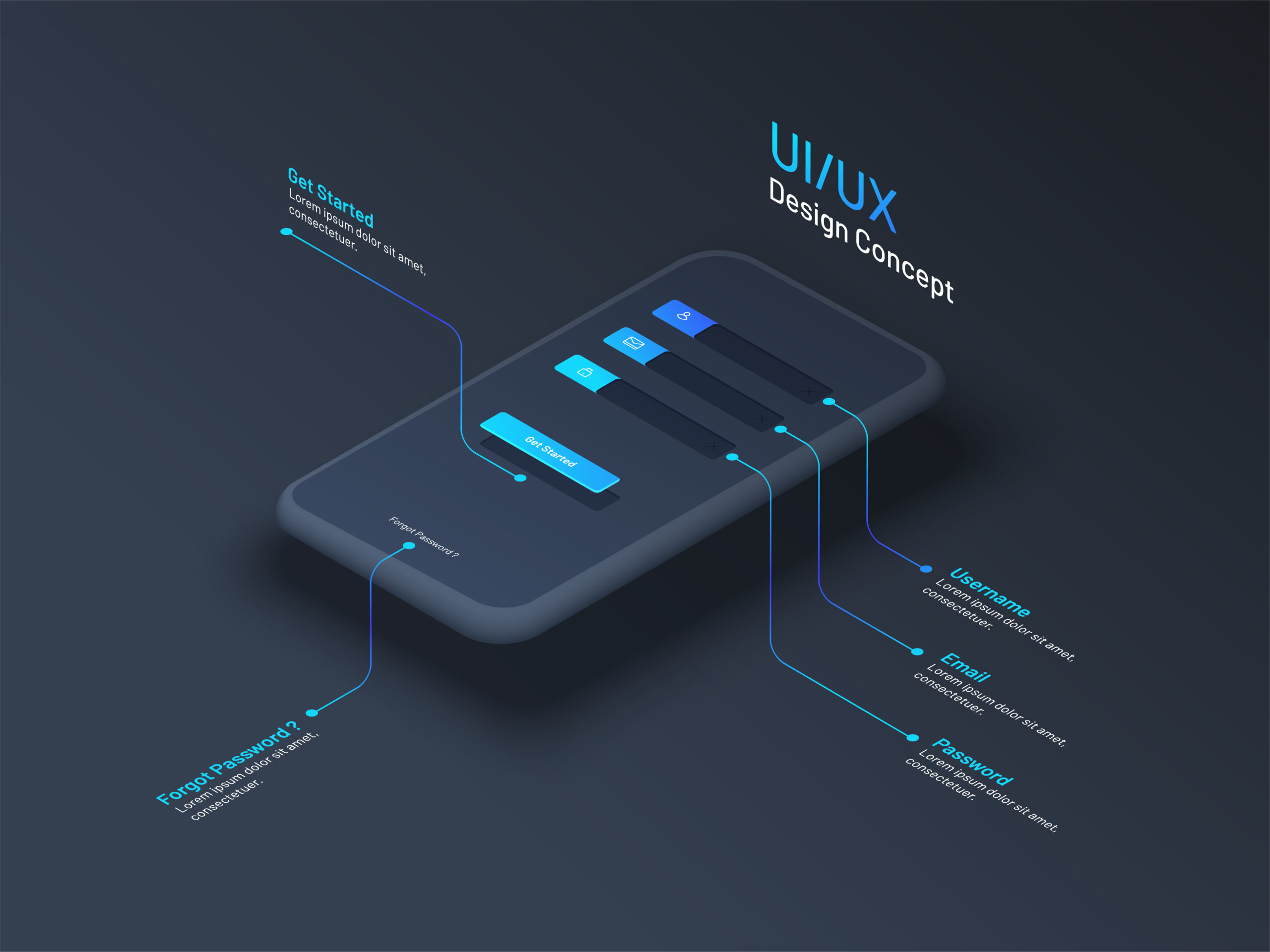What are the Steps to Creating a Digital Product?
Estimated Reading Time:
14
Minutes

We’ve talked a lot about the UX strategy behind digital products, but let’s go back to basics and touch on the steps to creating a digital product.
It’s no secret…digital products are SUPER lucrative. If you manage to create a good one, you can solve a lot of problems, go on to innovate new technologies, and take over the world (metaphorically speaking, of course).
But, as you should know by now (especially if you’re a regular in our jungle), a product is only as good as its intentions. And if you want to rush out a digital product to meet the moment and make some money, you’re setting yourself up for failure.
There are endless possibilities with what you can create and sell online. If you have an idea for a game-changing digital product in mind, then follow these steps to help you create the right product for the right people.
7 Steps to Creating a Digital Product:
- Consider the “Why?”
- Feasibility Testing
- Conceptualization
- Digital Product Design
- User Testing
- Iteration
- Launch
So, What Exactly IS a Digital Product?
You probably think that “digital product” is just a fancy, industry term we use interchangeably to describe websites and mobile apps, right? WRONG!
Websites and apps are digital products, and so are: ebooks, podcasts, videos, photos, games, and software systems. A digital product is an intangible thing that can be bought, sold, or downloaded online without having to physically restock.
Everything from a royalty-free photo you downloaded from Shutterstock to your favorite podcast falls under the digital product umbrella. So, you can see why both businesses and independent content creators are jumping over each other to get a piece of that pie.
Let's Take a Look at Some Popular Digital Products:
- Nelio Software: Nelio Software, a SaaS company, developed exclusive WordPress plugins that are currently used in over 80 countries.
- “Where the Crawdads Sing” by Delia Owens: This novel became one of the top-selling ebooks of all time with 1.42 million units sold in 2019.
- Baby Shark (We wish we were kidding…): Pinkfong, a South Korean educational entertainment company, released the music video for Baby Shark in 2016 and hit 10 billion views in January of 2022.
- The Joe Rogan Experience: Joe Rogan was already well-known among UFC fans, but his Spotify deal earned him $30 million for exclusive rights to his podcast.
- TikTok: TikTok became so much more than Gen Z viral dance videos after it gained an influx of new users in 2021 — 656 million downloads globally, to be exact!
- Minecraft: Yep, Minecraft began as an indie game in 2009. But, after being bought by Microsoft, it has sold over 200 million copies as of 2021.

What do all of these have in common? They are digital creations with humble beginnings that became huge sensations through product quality and word of mouth.
Whether the user wanted to A/B test their website, socialize with other content creators, or just be entertained, these products met their needs through the convenience of digital spaces.
Why are Digital Products a Good Investment?
You saw those numbers above, right? A good digital product is a surefire way for businesses and content creators, big or small, to gain notoriety in their competitive market.
Plus, success with a digital product doesn’t always require the backing of a megacorporation. If your product successfully helps users fulfill a need, they won't care if you’re backed by a big-time investor or a small-but-scrappy start-up team. The quality of your product tells the user everything they need to know.
We weren’t exaggerating earlier when we said the possibilities are endless with digital products. Tech is ever-evolving, and in CreateApe’s 20 years of digital product design experience, we’ve helped businesses and independent creators build all kinds of products and reach a bigger audience than they ever thought possible.
4 Benefits of Digital Products:
- Low Start-Up Costs: In many ways, a digital product is a much smarter investment for a company than mass-producing tangible products. All you need is a good designer, developer, some software systems, and maybe a good UX consultant (hint hint).
- High Earning Potential: You can turn a higher profit with certain digital products since you don’t have to worry about replenishing your inventory. The right products can also help you build passive income (translation: more “treat yo’self” money).
- Scalability: With the right product and the right marketing strategy, there’s no telling how many people you could reach. After all, how many nobodies became somebodies through a few YouTube videos or a podcast?
- Creative Problem Solving: The best thing about digital products is how creative you can get with them. We encounter new problems to solve every day, so you’re constantly presented with new opportunities to think outside the box and help people make their everyday tasks a little more enjoyable.
At the end of the day, it should all come down to that last point. The money and notoriety that comes from a good digital product are always nice, but never lose sight of the end-user.
The user’s experience with a digital product drives everything we do here at CreateApe. It helps us achieve the results our clients are looking for while using our creativity to build solutions that make people’s lives a little easier.
Let’s put it like this: Say you’re a server at a restaurant. The money you make in tips depends on how good your service is (and how much your guests enjoy their time in the restaurant).
It’s the same concept with digital products and user experience. If you’re just there to make money and leave, your tips and reviews will probably reflect that. But, if you’re there because you like helping people and fostering memorable experiences, your regulars will keep coming back for more!
7 Steps to Creating a Digital Product
Let’s say you notice a common, everyday problem that can be solved with a digital product. Let’s take it a step further and say you already have a great idea, and maybe a little start-up money. All that’s left to figure out is: What are the steps to creating a digital product?
There’s plenty of overlap between user experience strategy and the steps to creating a digital product, and it’s easy to see why. Nobody wants to invest the time and funds into creating a product that nobody wanted in the first place. Or worse, a great product that’s poorly executed.
The process isn’t always linear, and not everyone starts at the same point (the guys who created Uber probably have a lot more resources than an independent creator). But these are the most common steps to creating a digital product.
- Consider the “Why?”
The “Why?” behind the digital product should be the thing that carries you throughout the project. For example, why do you want to publish this ebook? Why are you creating this app? Why are you composing this particular piece of audio?
Let’s say you’re publishing a recipe book. Maybe you want to create a cookbook for college kids working with four ingredients or less. Maybe you noticed a lack of authentic cuisine from your culture and you want to share the real deal with everyone. Or maybe you have some ideas for healthy recipes that ACTUALLY taste good.
The same thing goes for websites, apps, or anything else in the digital space. The purpose behind the product matters as much as the actual product. If you can’t find a purpose, other than making some quick cash, then your users won’t see the point either.
- Feasibility Testing
Once you have the idea, it’s time to test it! User testing is important both before and after the product is created. But while testing your MVP with users helps you iron out any kinks before the project launches, feasibility testing shows you if your product stands a chance in your competitive market.
Start by narrowing down your target audience. Let’s use the ebook of recipes for college students as an example. We know the majority of our audience is in their late teens or early twenties (with a few outliers here and there) and probably evenly split in gender.
Put together a list of questions to discover their wants and needs — and maybe some frustrations they have with your competition. Your product should not only be usable, but better than your competitors' products if you really want to make an impression.
Some questions to ask in this ebook scenario would be: How much do you usually spend on groceries? What kind of kitchen equipment do you have? What kind of cuisine do you like? Have you tried any meal prep kits? What did you like/not like about them?

- Conceptualization
So, you surveyed your future users and they think your product sounds like a great idea…Awesome! Now it’s time to start thinking about the real thing.
The feedback you got from your audience is super helpful while putting together the digital product design and narrowing down features. It will help you figure out what makes the easiest, most accessible experience for them and get rid of the things they won’t find useful.
This is also a good time to start thinking about your brand. What will the finished product look and feel like? What is the overall vibe you’re going for? How are you incorporating your brand colors and messaging into the final product?
Having a clear picture in your head of the finished product will make the design process run smoothly. It may not look 100% accurate to your vision, but some ideas and stylescapes will get your design team creatively aligned.

- Digital Product Design
Now, for the fun part 😉
First, start by mapping out everything. This helps keep you organized and makes it easier to shift content placement than the high-fidelity design.
Keep the audience feedback in the back of your mind every step of the way. Going back to the example of the ebook, if most of the people you surveyed only had an air fryer in their dorm, you probably wouldn’t put recipes that require an oven or a stovetop front and center, right?
Or, what if they said they don’t have a huge budget for groceries? You’d probably have to cut out recipes that need fancy ingredients from Whole Foods or Trader Joe's.
Once all your content is organized and looking good, bring in those branding elements and stylescapes we talked about earlier. Plug logos, color palettes, photos, videos, and typography into the digital product design until the look is as unique as the content inside.

- User Testing
Now that you have a prototype ready, the next steps to creating a digital product are to test it with your users and iterate until you reach your MVP (minimum viable product).
Try to get the most open and honest feedback you can. It’s better to hear negative feedback and criticism during this stage than to lose your user’s interest because the product was confusing or frustrating to use.
The key is to take criticism constructively. Any feedback you get, good or bad, will help you improve the product in the long run and get a deeper understanding of user psychology. After all, only 55% of companies test their products with their users. This is your opportunity to make a good first impression and get a leg up on your competition.
The testing stage is extremely valuable if you want to turn out a quality product, so test with as many people as possible. Have them search every nook and cranny for flaws and nip them in the bud before they cause any real problems.

- Iteration
There’s a 99.99% chance that your product will need some changes, but that’s the beauty of user experience design. Your users will help you discover any kinks affecting the product so you can fix them before putting the real thing on the market.
Maybe your users couldn’t find what they were looking for easily enough. Or maybe you wanted to try something conceptual with your design that distracts the user. That doesn’t always mean it was a bad idea, it just doesn’t work for this product or these kinds of users.
No harm, no foul. Take any negative feedback and use it to improve the overall experience. You can also test and iterate as many times as you need to until you are confident the product has reached its full potential.
Digital product design has several moving parts, so it’s only natural that some things get lost in the shuffle. Don’t be afraid to double, triple, or quadruple-check your work. Then have the rest of your team and your users do it again for good measure.
- Launch!
Launch time! Are you ready to see all your creativity and hard work pay off? Of course, you are. However, the project isn’t always over after launch.
Depending on the product you release, you might need to go back to the drawing board once or twice. A website or mobile application, for example, usually goes through several rounds of quality control before launch. Sometimes links break, the code needs cleanup, or the software needs updating.
Have a maintenance plan in place to detect and fix problems before they negatively affect the user experience. You should also make sure everything is optimized for speed and efficiency because slow speeds turn users away.
Once your product is out there, it’s also time to think about next steps. Say your ebook was a huge hit and those college kids are clamoring for more recipes — where else will you take this idea? Will you release a series of ebooks focusing on different types of cuisine? Will you create a video series to share more recipes? Maybe start a cooking podcast?
Again…your options are limitless with digital products.
Who Can Help Me Create My Digital Product?
*Sigh* If only there were a multi-skilled, super-talented full-service UX/UI design agency that could help you with that…Wouldn’t that be amazing?
If you have the tech know-how or even an in-house design team, you’re off to a good start. There are also plenty of free resources to help you plan and put a prototype together. The CreateApe team is pretty partial towards Figma, but you can read more about our other favorites in our How to Become a UX Designer blog.
But, why venture into the jungle alone when you don’t have to? Especially if you have an idea for a digital product but don’t know where to start.
A UX consultant can lay the groundwork for your product by helping you with market and user research. They can also help you conceptualize the look and feel and strategize to create the best possible experience for the user. However, that only covers a few steps to creating a digital product.
A full-service UX/UI design team (*cough* like us *cough*) can take you from beginning to end, and then some! Our team has over 20 years of experience in digital product design, and we’ve seen a thing or two along the way.
We base our digital product design choices on industry experience and data-driven solutions to create AMAZING products. We know exactly what questions to ask your users so you can get the usable feedback you need.
We’re not only here to be your creative UX consultant. We want to be true partners every step of the way. Each member of our full-service team brings something special to the table so you get a fully-realized digital product. Let us take you from ideas to reality!
CreateApe's Services at Your Fingertips:
- UX/UI Design
- Web Development
- Branding
- Marketing
- Copywriting
- Video
- Research and Discovery
Some Things to Remember...
We know this makes it soooo tempting to create a digital product yourself. Who could resist the idea of passive income and millions of adoring users?
But creating a worthwhile product is no piece of cake. It’s hours upon hours of brainstorming, conceptualizing, and testing until you reach the MVP. And the hard work doesn’t end after launch, especially if users gravitate to your product and want more.
If you want to create a digital product, make sure you’re doing it for the right reasons. Make sure there’s an actual problem to be solved and a solution before contributing to the clutter of unusable or poorly thought out products on the market.
Key Takeaways:
- The user’s opinion will make or break the product.
- Your market is COMPETITIVE. Your users WILL go elsewhere if they find a better product.
- The steps to creating a digital product aren’t always linear, but completing the process in full is imperative to the overall quality of your product.
- Digital product design is ongoing. Iterations, improvements, and new products/features follow a successful launch.
- Earning passive income from your product is never a bad thing! But that money will disappear if you aren’t continuously making improvements or new products.
- Your audience will notice if you care about the user experience or not. Listen to their feedback and show them you care.
Need someone to walk you through the steps to creating a digital product? Start a project with CreateApe today!
Read more about how CreateApe handles UX strategy for digital products.
Share:
Let’s Work Together!
It’s a jungle out there — let the Create Ape experts help you traverse the wilds as we take your project to new heights.












.jpg)






























.png)

















.jpeg)










.png)






















